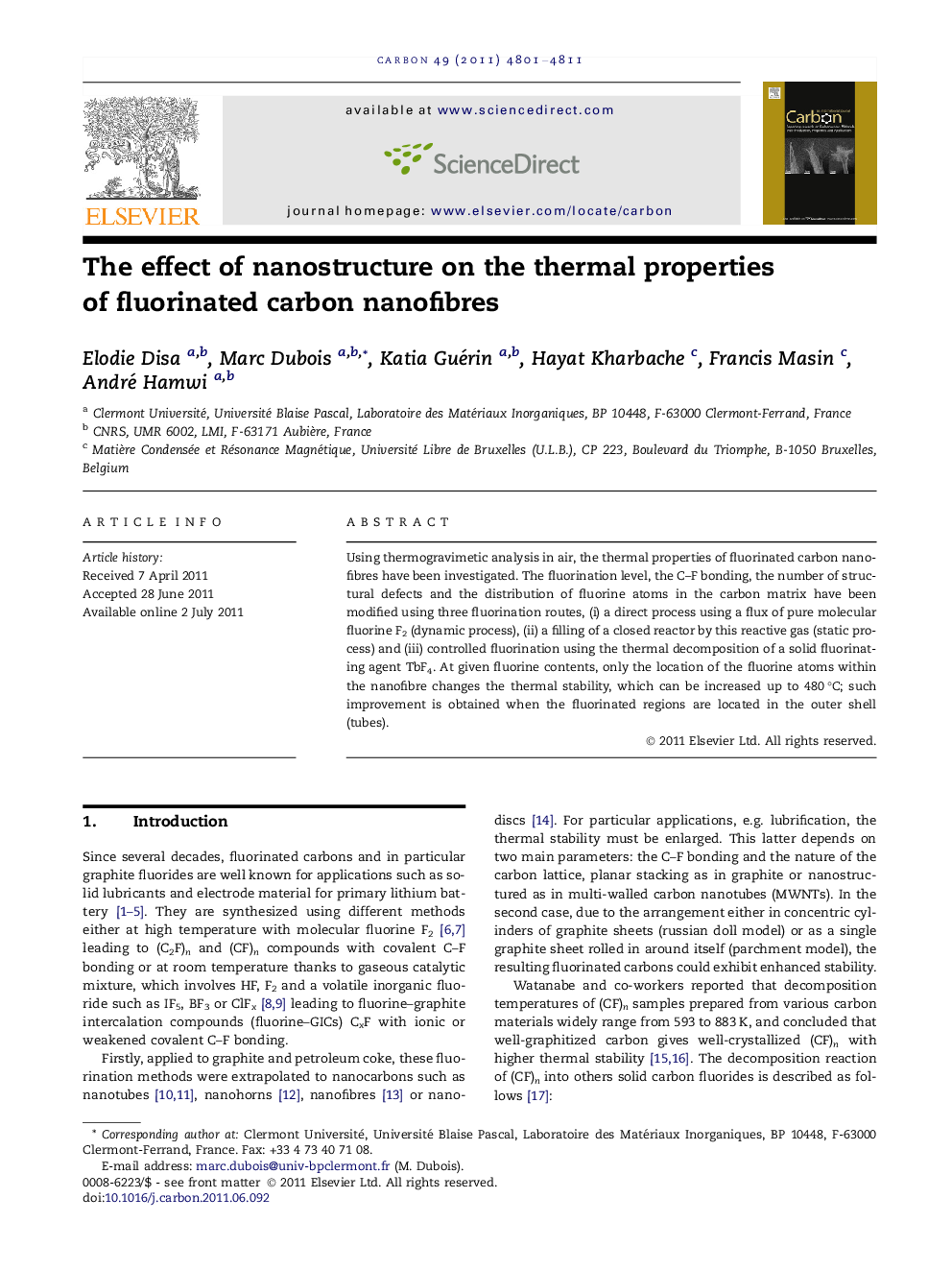| Article ID | Journal | Published Year | Pages | File Type |
|---|---|---|---|---|
| 1416313 | Carbon | 2011 | 11 Pages |
Using thermogravimetic analysis in air, the thermal properties of fluorinated carbon nanofibres have been investigated. The fluorination level, the C–F bonding, the number of structural defects and the distribution of fluorine atoms in the carbon matrix have been modified using three fluorination routes, (i) a direct process using a flux of pure molecular fluorine F2 (dynamic process), (ii) a filling of a closed reactor by this reactive gas (static process) and (iii) controlled fluorination using the thermal decomposition of a solid fluorinating agent TbF4. At given fluorine contents, only the location of the fluorine atoms within the nanofibre changes the thermal stability, which can be increased up to 480 °C; such improvement is obtained when the fluorinated regions are located in the outer shell (tubes).
